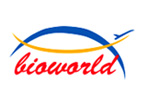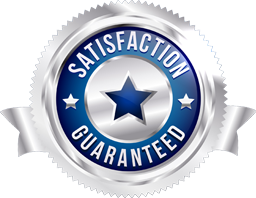Product Name :
CD217 Recombinant Protein Swiss-Prot :
Q96F46 Host :
E.coli Tag :
Amino acid Sequence :
MLRLLDHRALVCSQPGLNCTVKNSTCLDDSWIHPRNLTPSSPKDLQIQLHFAHTQQGDLFPVAHIEWTLQTDASILYLEGAELSVLQLNTNERLCVRFEFLSKLRHHHRRWRFTFSHFVVDPDQEYEVTVHHLPKPIPDGDPNHQSKNFLVPDCEHARMKVTTPCMSSGSLWDPNITVETLEAHQLRVSFTLWNESTHYQILLTSFPHMENHSCFEHMHHIPAPRPEEFHQRSNVTLTLRNLKGCCRHQVQIQPFFSSCLNDCLRHSATVSCPEMPDTPEPIPDYMPLW Restriction sites :
NdeI-XhoI Background :
The IL-17 family of cytokines consists of IL-17A-F, and their receptors include IL-17RA-RE. IL-17 cytokines are produced by a variety of cell types including the Th17 subset of CD4+ T cells, as well as subsets of γδ T cells, NK cells, and NKT cells. IL-17A and IL-17F, the most well-studied of the IL-17 cytokines, contribute to fungal and bacterial immunity by inducing expression of proinflammatory cytokines, chemokines, and antimicrobial peptides. In addition, IL-17A contributes to the pathogenesis of several autoimmune disease. IL-17E promotes Th2 cell responses. The roles of IL-17B, IL-17C, and IL-17D are less clear, however these family members also appear to have the capacity to induce proinflammatory cytokines. IL-17 receptors have an extracellular domain, a transmembrane domain, and a SEFIR domain. They are believed to signal as homodimers, heterodimers, or multimers through their SEFIR domain by recruiting the SEFIR domain-containing adaptor Act1. Unlike most cytokines that signal through Jak/STAT pathways, IL-17 signaling results in NF-κB activation. IL-17RA associates with IL-17RC to mediate signaling by homodimers and heterodimers of IL-17A and IL-17. IL-17RA is broadly expressed with highest expression in hematopoietic cells. Soluble :
PBS, 4M Urea, PH7.4 Purification&Purity :
Transferred into competent cells and the supernatant was purified by NI column affinity chromatography and the purity is > 85% (by SDS-PAGE). Storage&Stability :
Store at 4°C short term. Aliquot and store at -20°C long term. Avoid freeze-thaw cycles. Expression vector :
pet-22b(+) BiowMW :
~37kDa Note :
For research use only, not for use in diagnostic procedure. concentration :
CD217 Recombinant Protein Swiss-Prot :
Q96F46 Host :
E.coli Tag :
Amino acid Sequence :
MLRLLDHRALVCSQPGLNCTVKNSTCLDDSWIHPRNLTPSSPKDLQIQLHFAHTQQGDLFPVAHIEWTLQTDASILYLEGAELSVLQLNTNERLCVRFEFLSKLRHHHRRWRFTFSHFVVDPDQEYEVTVHHLPKPIPDGDPNHQSKNFLVPDCEHARMKVTTPCMSSGSLWDPNITVETLEAHQLRVSFTLWNESTHYQILLTSFPHMENHSCFEHMHHIPAPRPEEFHQRSNVTLTLRNLKGCCRHQVQIQPFFSSCLNDCLRHSATVSCPEMPDTPEPIPDYMPLW Restriction sites :
NdeI-XhoI Background :
The IL-17 family of cytokines consists of IL-17A-F, and their receptors include IL-17RA-RE. IL-17 cytokines are produced by a variety of cell types including the Th17 subset of CD4+ T cells, as well as subsets of γδ T cells, NK cells, and NKT cells. IL-17A and IL-17F, the most well-studied of the IL-17 cytokines, contribute to fungal and bacterial immunity by inducing expression of proinflammatory cytokines, chemokines, and antimicrobial peptides. In addition, IL-17A contributes to the pathogenesis of several autoimmune disease. IL-17E promotes Th2 cell responses. The roles of IL-17B, IL-17C, and IL-17D are less clear, however these family members also appear to have the capacity to induce proinflammatory cytokines. IL-17 receptors have an extracellular domain, a transmembrane domain, and a SEFIR domain. They are believed to signal as homodimers, heterodimers, or multimers through their SEFIR domain by recruiting the SEFIR domain-containing adaptor Act1. Unlike most cytokines that signal through Jak/STAT pathways, IL-17 signaling results in NF-κB activation. IL-17RA associates with IL-17RC to mediate signaling by homodimers and heterodimers of IL-17A and IL-17. IL-17RA is broadly expressed with highest expression in hematopoietic cells. Soluble :
PBS, 4M Urea, PH7.4 Purification&Purity :
Transferred into competent cells and the supernatant was purified by NI column affinity chromatography and the purity is > 85% (by SDS-PAGE). Storage&Stability :
Store at 4°C short term. Aliquot and store at -20°C long term. Avoid freeze-thaw cycles. Expression vector :
pet-22b(+) BiowMW :
~37kDa Note :
For research use only, not for use in diagnostic procedure. concentration :
Blocking peptide available as NCP0369P

 CD217 Recombinant Protein
CD217 Recombinant Protein 
 Datasheet
Datasheet COA
COA MSDS
MSDS SHIP
SHIP